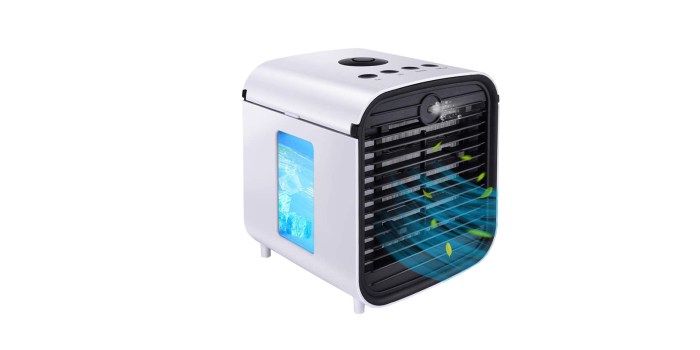Welcome to the enigmatic world of chill in the air crossword, where cryptic clues await your unraveling. Immerse yourself in a captivating narrative that will test your wit and expand your vocabulary.
As you navigate through this labyrinth of words, you’ll encounter a symphony of meanings, both literal and metaphorical. The chill in the air crossword not only challenges your crossword prowess but also invites you to explore the multifaceted nature of language.
Definitions of “Chill in the Air”

The phrase “chill in the air” can have both literal and metaphorical meanings. Literally, it refers to a drop in temperature, often associated with the onset of autumn or winter.
When the chill in the air makes you want to curl up with a crossword puzzle, why not test your knowledge of iconic cinematic weaponry with the “legends of the fall knife” crossword ? From the classic Bowie knife to the more modern tactical folders, this puzzle will challenge your movie trivia and leave you feeling as sharp as the blades themselves.
And once you’ve solved the crossword, you’ll have a newfound appreciation for the chill in the air and the thrill of a good puzzle.
Metaphorically, “chill in the air” can indicate a sense of unease, tension, or foreboding. It can also suggest a lack of enthusiasm or excitement.
Examples of Usage
- “As the leaves turned golden brown, a chill came into the air, signaling the approach of winter.”
- “There was a chill in the air as the jury entered the courtroom, anticipating the verdict.”
- “The team’s performance was lackluster, with a palpable chill in the air.”
Causes of a “Chill in the Air”

A “chill in the air” is a term often used to describe a noticeable drop in temperature that can be felt on the skin. This sensation is caused by a combination of meteorological factors, including temperature, humidity, and wind.
Temperature
The most obvious factor contributing to a “chill in the air” is a decrease in temperature. As the temperature drops, the air becomes less able to hold heat, causing it to feel cooler. The rate at which the temperature drops can also affect the sensation of a “chill in the air.”
A sudden drop in temperature can create a more noticeable chill than a gradual decrease.
Humidity
Humidity also plays a role in creating a “chill in the air.” When the air is humid, it contains more water vapor. Water vapor can absorb heat from the body, making the air feel cooler. High humidity can make it feel colder than it actually is, even if the temperature is not particularly low.
Wind, Chill in the air crossword
Wind can also contribute to a “chill in the air.” Wind can remove heat from the body through a process called convection. As the wind blows across the skin, it carries away heat, making the body feel cooler. The stronger the wind, the greater the chill factor.
Difference Between a “Chill in the Air” and a “Cold Snap”
A “chill in the air” is a temporary sensation caused by a combination of meteorological factors. It is not the same as a “cold snap,” which is a period of unusually cold weather that can last for several days or even weeks.
Cold snaps are often associated with strong winds, low temperatures, and snow or ice.
Effects of a “Chill in the Air”: Chill In The Air Crossword

A “chill in the air” can have a profound effect on the human body, mood, and behavior. Understanding these effects can help us better prepare for and mitigate any potential risks.
Physiologically, a “chill in the air” causes the body to conserve heat. Blood vessels constrict, redirecting blood flow away from the extremities and towards the core. This can lead to cold hands and feet, as well as shivering, which generates heat through muscle contractions.
Mood and Behavior
A “chill in the air” can also affect mood and behavior. The drop in temperature can trigger the release of hormones like serotonin, which has calming and mood-boosting effects. This can lead to feelings of relaxation and coziness.
However, prolonged exposure to a “chill in the air” can also have negative effects on mood. The body’s natural response to cold can lead to fatigue, irritability, and difficulty concentrating.
Health Risks
While a “chill in the air” is generally not dangerous, it can pose certain health risks, especially for vulnerable populations.
- Hypothermia: Prolonged exposure to cold temperatures can lead to hypothermia, a potentially life-threatening condition where the body’s core temperature drops dangerously low.
- Respiratory infections: Cold temperatures can weaken the immune system, making individuals more susceptible to respiratory infections like colds and flu.
- Cardiovascular problems: Cold temperatures can increase blood pressure and strain the heart, especially for those with existing cardiovascular conditions.
Cultural and Historical Significance of “Chill in the Air”

The concept of “chill in the air” has a rich cultural and historical significance across various societies. It has been a source of inspiration and reflection in literature, art, and music, capturing the essence of changing seasons, human emotions, and the passage of time.
In many cultures, the “chill in the air” marks the transition from summer to autumn, a time of introspection and preparation for the colder months ahead. In literature, poets and writers have used this imagery to evoke a sense of melancholy and nostalgia, as well as anticipation for the unknown.
Role in Literature
In William Wordsworth’s poem “Ode to Autumn,” the “chill in the air” is personified as a harbinger of the season’s change, bringing with it a sense of peace and tranquility:
“Season of mists and mellow fruitfulness,Close bosom-friend of the maturing sun;Conspiring with him how to load and blessWith fruit the vines that round the thatch-eves run…”
Similarly, in Emily Dickinson’s poem “Indian Summer,” the “chill in the air” serves as a reminder of the fleeting nature of time and the inevitable approach of winter:
“These are the days when Birds come backA very few
- a Bird or two
To take a backward look.The same low tone
- the similar Speech
The same protruded FeatureAnd then
- again
- the Blue.”
Essential FAQs
What is the difference between a “chill in the air” and a “cold snap”?
A “chill in the air” typically refers to a noticeable drop in temperature that creates a sensation of coldness, often accompanied by wind and humidity. A “cold snap,” on the other hand, is a more severe and prolonged period of cold weather.
How can a “chill in the air” affect mood and behavior?
Exposure to cold temperatures can trigger the release of stress hormones, which can lead to feelings of anxiety, irritability, and decreased energy levels.
What are some cultural associations with “chill in the air”?
In many cultures, a “chill in the air” is associated with the changing seasons, particularly the transition from summer to fall or winter. It can evoke feelings of nostalgia, introspection, and a sense of anticipation for the coming months.
